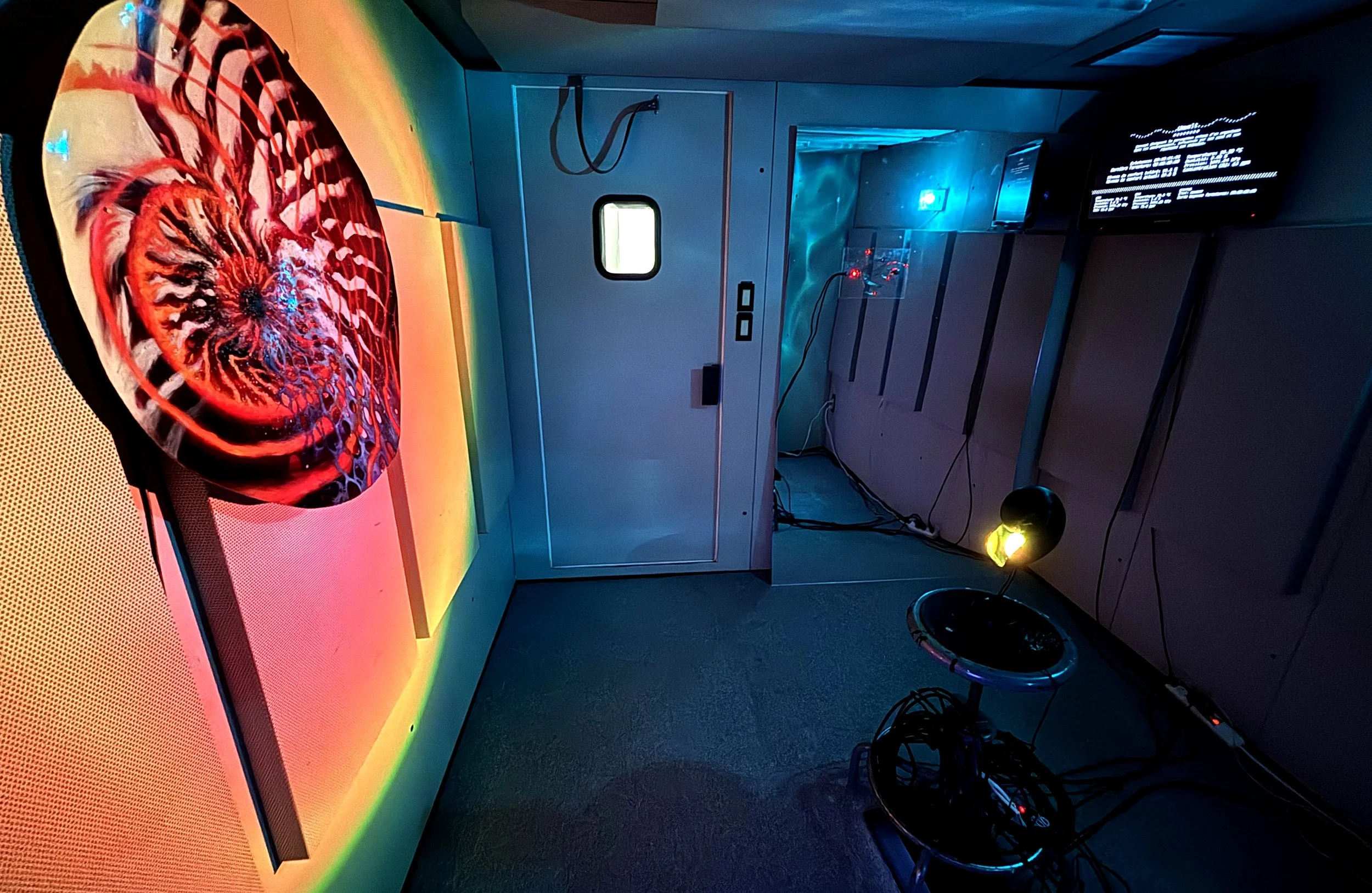
Umwelt : Nautilidae
electronic circuits, acrylic on Plexiglas, screens, mirrors, photoresistors, 3D printing (2025)
Umwelt is a biological concept that refers to the specific way an organism perceives its environment, based on its sensory capabilities and cognitive processes. Each living organism has its own umwelt and subjective view of the world, dependent on the parameters necessary for its survival. Thus, every living being, from the simplest to the most complex, is an open system that receives and interprets biosemiotic information from its environment to respond to it.
The immersive installation takes us inside the perceptual environment of the Nautilus, a striped-shelled cephalopod that has lived in the deep sea for 400 million years. This primitive creature, older than flowering plants, has basal and simplistic sensory structures; its eyes perceive variations in light, its tentacles support an olfactory system, and its shell detects changes in water pressure.
Similarly, the electronic organism Umwelt: Nautilidae perceives subtle changes in the environment to detect the presence of visitors.
As we enter the completely soundproof space, the heaviness and complete silence envelop us, while projections of water reflections transport us into an underwater world. The two large facing mirror panels disorient us and expand the tiny room, repeating infinitely.
Delicately hung on a mirror, an electronic circuit in a tentacle-like shape made of soldered copper wires receives sensors for temperature, humidity, barometric pressure, and CO2, before sending this information to a second screen. On this screen, we can see the current comfort level and a tolerated comfort level, both expressed in percentages.
Thus, the nautilus captures environmental parameters and the presence of visitors through temperature and elevated CO2 levels. If its comfort level falls below its tolerated level, the system shuts down, and the light turns off. A message on the screen informs us that we have disturbed the organism and invites us to leave the room.
Only when the parameters return to "acceptable" does the light turn back on, and the system resumes operation. With each cycle of closing and opening, the percentage of tolerated discomfort increases, as if the creature becomes accustomed to our presence and allows itself to be tamed, functioning as an adaptive mechanism.
A large nautilus eye painted in acrylic on Plexiglas crudely perceives the shadows we cast on it using about fifteen photoresistors, which then send the information as black and white pixels to a cathode-ray television screen, emulating the primitive vision system of the nautilus.






























